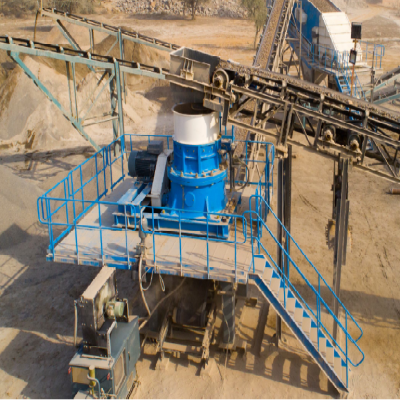

Typically, “crushers of 50 to 100 tph are most effective for projects in the hilly terrains of the Northeast, J&K, Uttarakhand and Himachal Pradesh, while projects in central, western and southern India would need crushers of minimum 200-300 tph capacity,” says Gopi Krishna More, Managing Director, Torsa Machines.
“Whereas a 150-tph capacity plant was considered standard five years ago, now a 250 tph or even higher plant is considered so, and regular enquiries come in for 500-tph plants as well,” shares Udayan Chakravorty, Cluster Head, Sales and Marketing, Taurian Minerals Processing. He attributes the preference for bigger capacity plants instead of multiple smaller plants to the short gestation period for projects, coupled with resources like manpower, land and allied machinery getting either very expensive or increasingly scarce, leaving contractors with no choice.
Essentially, Vivek Bhatia, MD & CEO, thyssenkrupp Industries India observes a demand-supply gap (more demand, less supply) owing to enhanced construction activity and environment-related restrictions on quarrying and such activities. This has necessitated that quarry operators and aggregate manufacturers install bigger capacity machines for more output.
This changing preference is impacting the product portfolio of vendors.
“We now have plants of 350 tph and higher,” says Chakravorty. “At Taurian, plants of over 250-TPH capacity make up about 80 per cent of sales.”
Terex Powerscreen has launched 300-tph track plants suitable for road construction and infrastructure and iron ore mining.
In what sectors are mobile crushers more sought after?
Wheeled (semi-mobile) and stationery crushers command 80-85 per cent of market share while track mobile crushers with in-built engines fill in the rest, opines Vadiraj Pappu, Business Head, Mining & Construction Equipment Division, Voltas.
Skid-mounted or stationary plants have traditionally enjoyed over 50 per cent of the market, according to Chakravorty. He expects this to continue. Wheel-mounted plants are becoming less popular while demand for track-mounted plants has increased substantially. Whereas about 20 per cent of Taurian’s present turnover is from track-mounted plants, he expects this share to reach 40 per cent in two years.
The strong demand for portable and track units is from “customers looking at faster deployment and inter-site mobility”, says Raj Shrivastav, Executive in Charge, Crushing & Screening, TIL Ltd. “Mobility and flexibility on power sources are in-demand configurations for crushing plants in the 200-300 tph range.”
Compactness is another sought-after feature. Kleemann’s jaw crusher MOBICAT, impact crusher MOBIREX, cone crusher MOBICONE and classifying screen MOBISCREEN have compact dimensions and mobile tracks, making them easy to transport, flexible and simple to relocate. “No special clearances are required to start operations and, finally, there are no foundation costs, thus increasing demand and sale,” notes Ramesh Palagiri, Managing Director and CEO, Wirtgen India.
While commercial aggregate producers still prefer stationary plants or skid-mounted crushers, in the mining sector, mobile units are preferred as the crusher needs to be moved frequently. In turn, mobile crushers have limited application in road construction where contractors have been awarded long stretches.
In terms of the configuration of wheeled plants, typically a vibrating grizzly feeder with jaw crusher occupies the first chassis trailer and a cone crusher with an on-board Quadra deck vibrating screen the second chassis trailer, explains Shrivastav. “Three-stage configurations additionally would have a chassis trailer with the vertical shaft impactor with an on-board Quadra deck vibrating screen.”
The downside of tracked plants and wheeled plants is that they do not cater to special requirements, flexibility in production or adaptation to changing needs on product sizes, a feature mainly associated with larger capacity plants, observes Shrivastav.
- CHARU BAHRI